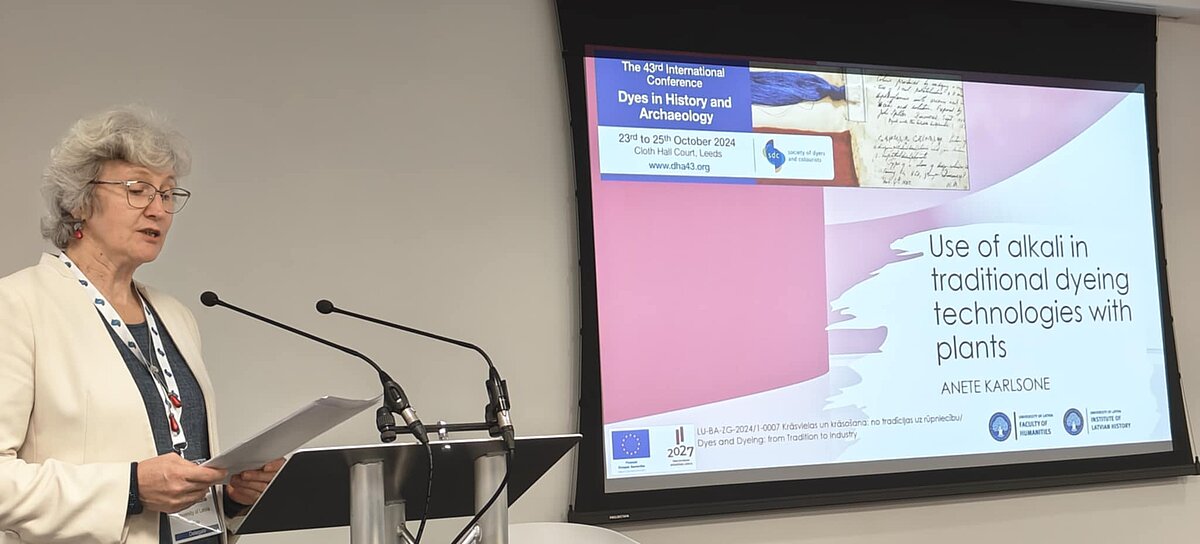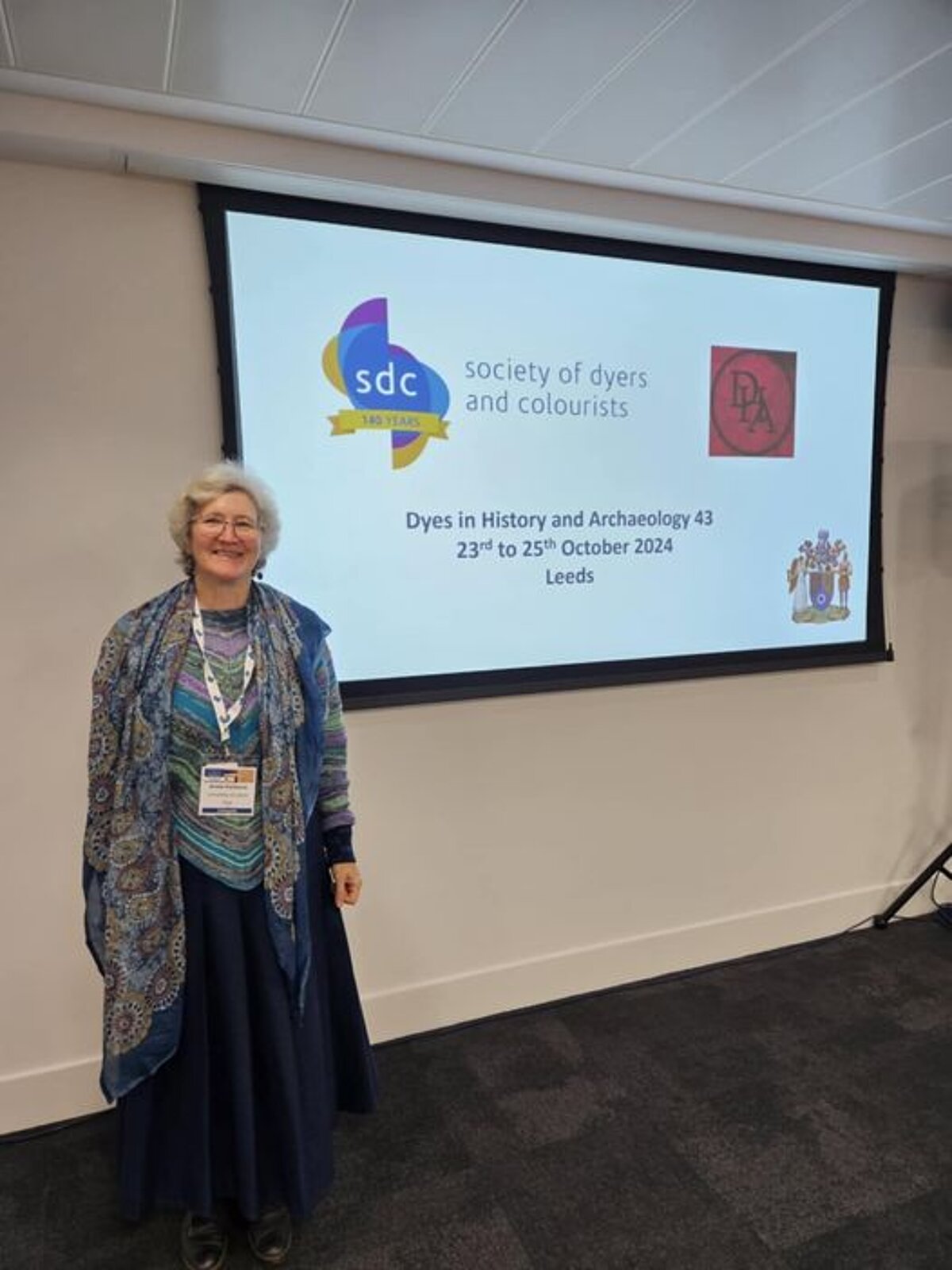
Within the framework of the project LU-BA-ZG-2024/1-0007 "Dyes and Dyeing: from Tradition to Industry", the leading researcher of the Institute of Latvian History of the Faculty of Humanities of the University of Latvia, Dr. hist. Anete Karlsone with the paper "Use of alkali in traditional dyeing technologies with plants" participated in the international conference "Dyes in History and Archaeology' 43", which was held in Leeds, United Kingdom from October 23 to 25, 2024. This time the conference was organized by the "Society of Dyers and Colourists" in cooperation with the University of Leeds.
The conference presented the latest discoveries in the research of natural dyes and early synthetic dyes. Chronological reports covered time period from Ancient Egypt to the 19th century, as well as the latest non-destructive or low-destructive dye research methods of the 21st century. A. Karlsone in her report, using the results of practical dyeing experiments, proved that the red color mentioned in the Latvian ethnographic material can be obtained from plants containing tannins only under the influence of alkali. It aroused the interest of archaeologists and other researchers from different countries, as it provided new knowledge about the traditional dyeing methods by which it would have been possible to obtain red shades in ancient times.
Paper sections were held in person, but particients could also follow them and take part in the discussion remotely. The conference was attended by 120 participants (71 of them in person) from 22 countries: Austria, Belgium, China, Czech Republic, Denmark, Estonia, Finland, France, Germany, Italy, Japan, Latvia, Netherlands, Norway, Peru, Portugal, Romania, Spain, Switzerland, United Kingdom and United States of America.

 CONFERENCE
CONFERENCE
